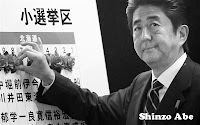 |
| Goldsilver.com |
Guillermo Barba/Goldsilver.com
A few weeks ago the Bank of Japan announced its latest round of monetary stimulus, the third in four months, and the fifth of 2012.
The Bank of Japan (BoJ) declared a monetary expansion of 10 trillion yen, putting its cumulative asset purchases and holdings at a whopping 101 trillion yen.
This is to a degree, Japan's version of the Federal Reserve's Latest Program (QE4), announced last month.
Through QE4 the Fed will be printing (debasing) a scheduled 85 billion dollars a month through the purchase of Treasury bonds and mortgage-backed securities (MBS). It is worth noting that if applied as stated, the Fed's balance sheet will approach $4 trillion by the end of 2013.
The BoJ's recent measure, of course, is nothing new, but it does allow us to foresee the Fed's own path: once you fall into the trap of monetary creation, you cannot escape its fate. Governments will follow the same path to the end, which needless to say, will be severe for unsuspecting majority.
The same applies to the "cancer" of fiscal deficits: If the combination of deficit spending and monetary stimulus were the answer, Japan would have a robust economy and not have fallen victim to two "lost decades" continuously. Further evidence to the Keynesians and monetarists (for whom the hole is never deep enough) that the fiscal and monetary exit will not go unpunished.
A few data points suffice to show this trend. By September last year, the BoJ held a 11.1% of the total outstanding Japanese government bonds, according to its own figures. For the first time in history, its holdings of government debt alone exceeded a record 100 trillion yen.
In practice, 11 out of every 100 yen in Japanese debt were created out of nothing by its own central bank to finance a rapidly growing deficit and cover the government's borrowing costs. The trend has only accelerated over the past years.
The BoJ has attributed its intervention as a means to offset Japan's structural economic issues. The country faces declining revenues, a product of several decades of economic stagnation, and rising costs attributable to an increase in social spending to sustain its aging population.
This comes in addition to Japan's already hefty debt to GDP ratio of 230%, the highest in the developed world, exceeding that of any European nation including Greece, Italy, Portugal or Ireland. While Japan has benefited from the confidence financial markets have given it, this does have its limits.
To be more realistic, Japan's sovereign debt already exceeds one quadrillion yen ( ¥1,000,000,000,000,000+ ). This debt is un-payable. Its amounting of debt will not prevent disaster, it will only postpone it.
Notwithstanding its critical situation, the incoming leadership of Prime Minister Shinzo Abe, has been very vocal in his intention to raise monetary and fiscal intervention to unseen levels.
 |
| Goldsilver.com |
Clouded by the erroneous thought that government can manipulate the economy at will, Abe has promised to "re-inflate" the economy at all costs, even threatening the Bank of Japan's independence if it does not guarantee "unlimited" currency creation and a higher target inflation rate.
More than ever, a currency crisis threatens the Land of the Rising Sun. An eventual collapse of its bond market will eventually become a serious strain on government financing. Benefited to date by record low yields (around 0.8% on 10 year debt), if interest rates soar (bond prices fall), financing deficits will become impossible.
Could that be the true objective of the new government?
Some say that Japan owes most of its debt to "itself" or its large population of savers.
But just for that reason, the clear decision to "kill" the yen, which is at multi-month lows against the U.S. dollar, has dyes that go far beyond economic immorality.
What do you call a government policy aimed at devaluing its currency?
Do the Japanese know that every additional round of stimulus simply takes the debt (much of which is owed to them) to un-payable levels?
This is exactly what will occur: a scam for paper savers.
The result, of course, will be a more pronounced depression leading to more lost decades and the impoverishment of citizens.
As is evident, we are in a global "currency war" through which countries such as the United States and Japan are continuously devising more effective and faster ways to devalue their currencies in what has become a Race To Debase. No government wants a strong currency.
The world is undergoing an incredible amount of systemic risk that threatens the existence of millions. The mountain of debt that has accumulated seems endless, but it will fall under its own weight.
The root cause of this tragedy, to many unknown, began with the forced demonetization of silver in the nineteenth century, and a century later to also include gold with the break from Bretton Woods in 1971.
Both precious metals (such as Prof. Antal Fekete says in his latest article "The Silver Saga"), constituted "the best extinguishers of debt we had".
 |
| Goldsilver.com |
Therefore possessing precious metals today makes more sense than at any other point in history. True money cannot be created out of nothing as currencies are because they are tangible assets with intrinsic value. Thus any person in Asia, Europe, America, regardless of location, can seek the refuge these monetary assets offer. The alternative is falling victim to the house of cards that debt and currencies are today.
No hay comentarios:
Publicar un comentario